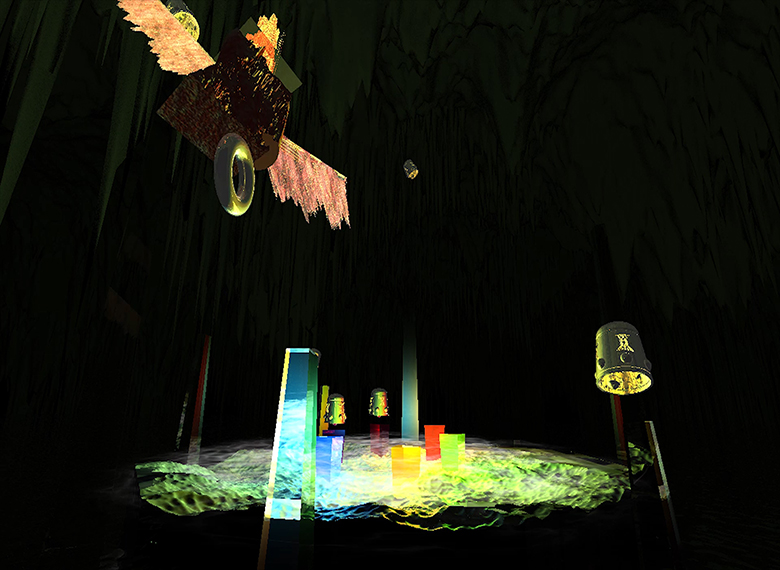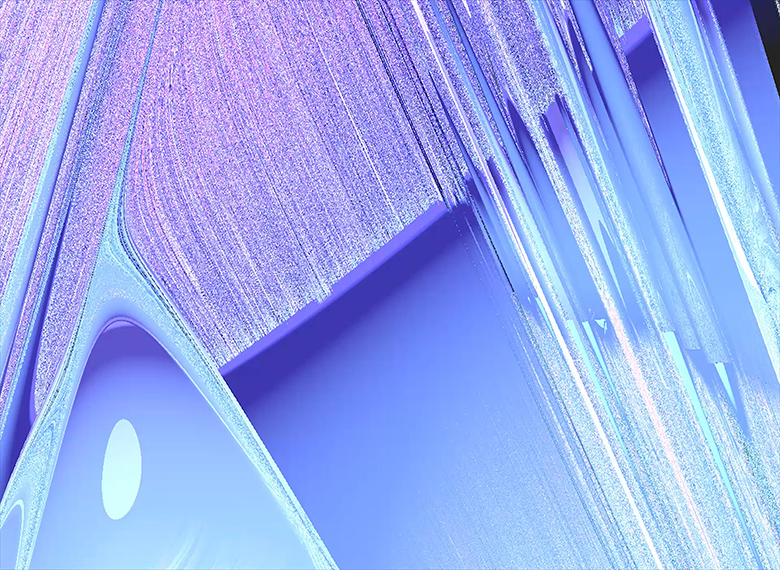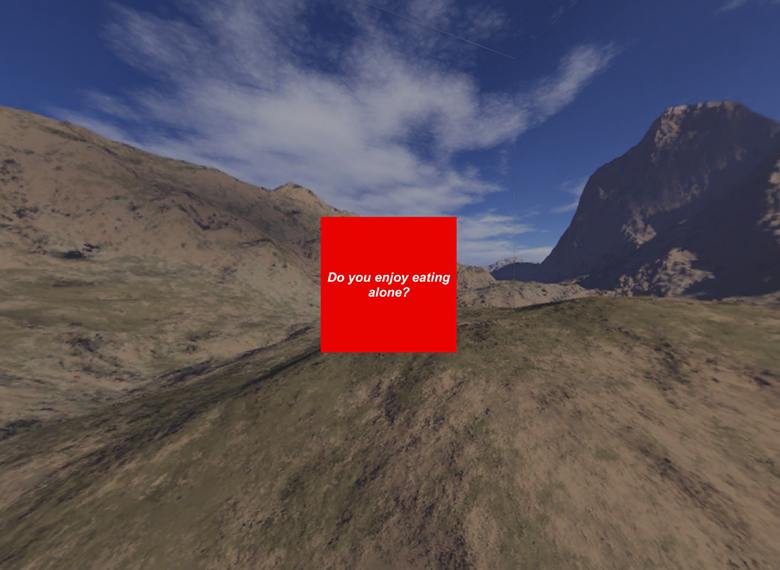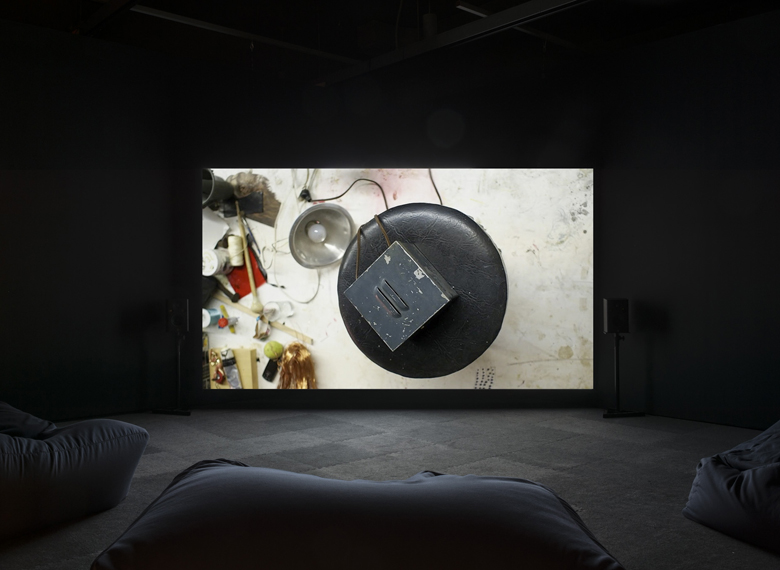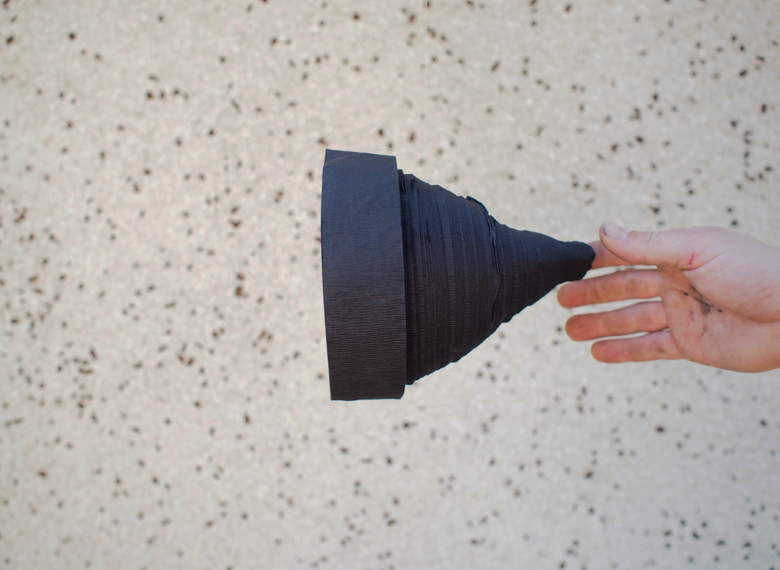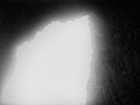for the time being is Alberta's 10th Biennial of Contemporary Art, curated by Kristy Trinier and Peta Rake. Spanning across two venues, the Biennial opened first at the Art Gallery of Alberta May 27th, and then at Walter Phillips Gallery June 24th. The 24 artists included in this “analogy of thinking about what it means to be in-between spaces and times” have been in conversation with the curators, and each other, for over a year.
Luma asked three writers to review three film or media artworks in this very visible icon of Alberta’s culture and underlying dialogues.
Echo’s Chorus by Devon Beggs: A Strange Polyphony
by Areum Kim
The video starts in a dark cave draped with a host of stalactites, shrouded in soft synth sound. Absurd and whimsical forms emerge from the transmuting landscape of Devon Beggs's Echo's Chorus (2017), a strange and surreal 3D animation compounded by piquant synth audio. Reminiscent of early 3D CGI animations, the video is layered with alluring textures and strange figures. The work's obscure imagery and audio slowly climb to a high point in its twenty-minute runtime; crystalline lights and dissonant audio reach their apogee: an entropic takeover of noise and static.
Boldly aiming for "a state of transcendence or spiritual ecstasy" (according to the didactic panel), the work concerns itself with visual and aural stimulation on a sci-fi or otherworldly bent. Installed as a large-scale projection with engulfing audio, the work directly resorts to the physicality of sound and light in pursuit of a transcendent fugue, the first necessary, physical step in a such pursuit.
Echo's Chorus has a rhythmically persuasive world-building sensibility based on the logic of echoing and reverberation, multiplications ensuing from a single initiation. Echo creates a spatial and temporal architecture. It delimits a breadth of space while the soundwaves' deferrals shape a temporal dimension, a mental expansion of space that we experience while seated in a dark gallery. This logic is willfully reflected in the work’s spatial sensibilities, with the alluring interiority of the cave and procreating landscape.
Spiritual experience here is the opened synapses of intuitive associations, a stimulation that is both sensory and cerebral. While the echo expands a sense of space and time, the work’s ambiguous iconography ignites a series of associations that do not ask to be decoded, remaining in the realm of intuition. Bells ring as senses awaken.
Which Shape With Everyday Items Stuck On It Are You Really?
by Adam Waldron-Blain
There are two kinds of internet quiz: a quick test on Friday at work that begs you to share it to Facebook, or something longer with a sheen of pseudoscientific respectability; with more overconfident astrological specificity, earnest new-age business advice, and questionable statistical provenance. Craig Fahner & Neal Moignard’s Smokescreen exists as three-screened machine in the gallery and an archive on Instagram; it is both kinds.
Delightfully, it asks me to swipe right if “It frustrates me to not understand how something works.” And I am frustrated by the unclear ways that my answers change the colour and texture of the character forming on the larger screen—a few results combine their patterns, but soon they start to undo one another. But I'm more frustrated by the didactic’s insistence that this is about information-gathering on the internet, as if Google’s profile is built on “Which Harry Potter House You Truly Belong In,” not by scraping your search habits directly.
But what is it to act all this out, as if we didn’t know? More compelling are the pleasures of the quiz itself: awkward self-reflection in public, a funny shape peppered with stock products from a 3D model library, the on-screen motion of the tracking. Despite tracking my face and publishing monstrous me to Instagram, Smokescreen goes out of its way to preserve my privacy.
Abject Object Vacation Vocation: Word, Image and Sound Play in the Work of Stacey Watson and James Patterson
by Maeve Hanna
Vignettes of everyday detritus flash across the screen: objects fall to the ground, balloons pop, garbage lays scattered or is employed as an instrument for sound-making. Stacey Watson and Justin Patterson’s playful video Object Vocation offers a much-needed moment of respite from contemporary life.
Object Vocation resembles, as Patterson has noted, an Abject Vacation.1 The artists’ absurd anti-narrative springboards off a socio-political climate pocked with economic uncertainty, distrust in political leaders, and anxiety concerning climate change. Objects found around the artists’ respective homes are filled with air, blown by a fan, animated by hand—all to a humorously minimal soundtrack highlighting repetitive actions. Moving image and sound do an awkward, dissonant dance together until the absurdity of the pairing erupts in giggles from the audience—themselves nestled on absurdly large and comfortable bean-bag chairs in the darkness.
Creating limitless entry and exit points, Object Vocation exists as a rhizome, working laterally rather than hierarchically. It resists narrative structure, enabling a waterfall of connections between semiotic chains, social and otherwise. In its chaotic material excess, Object Vocation follows a somewhat Deleuzian path, etching out a space inside which not to view Alberta’s provincial and international socio-political realities. And yet what else does a week off of work do except make you think of all the work you need to do when you get back.
for the time being: 2017 Biennial of Contemporary Art will continue at the Art Gallery of Alberta and Banff Centre’s Walter Phillips Gallery until September 10th, 2017.

